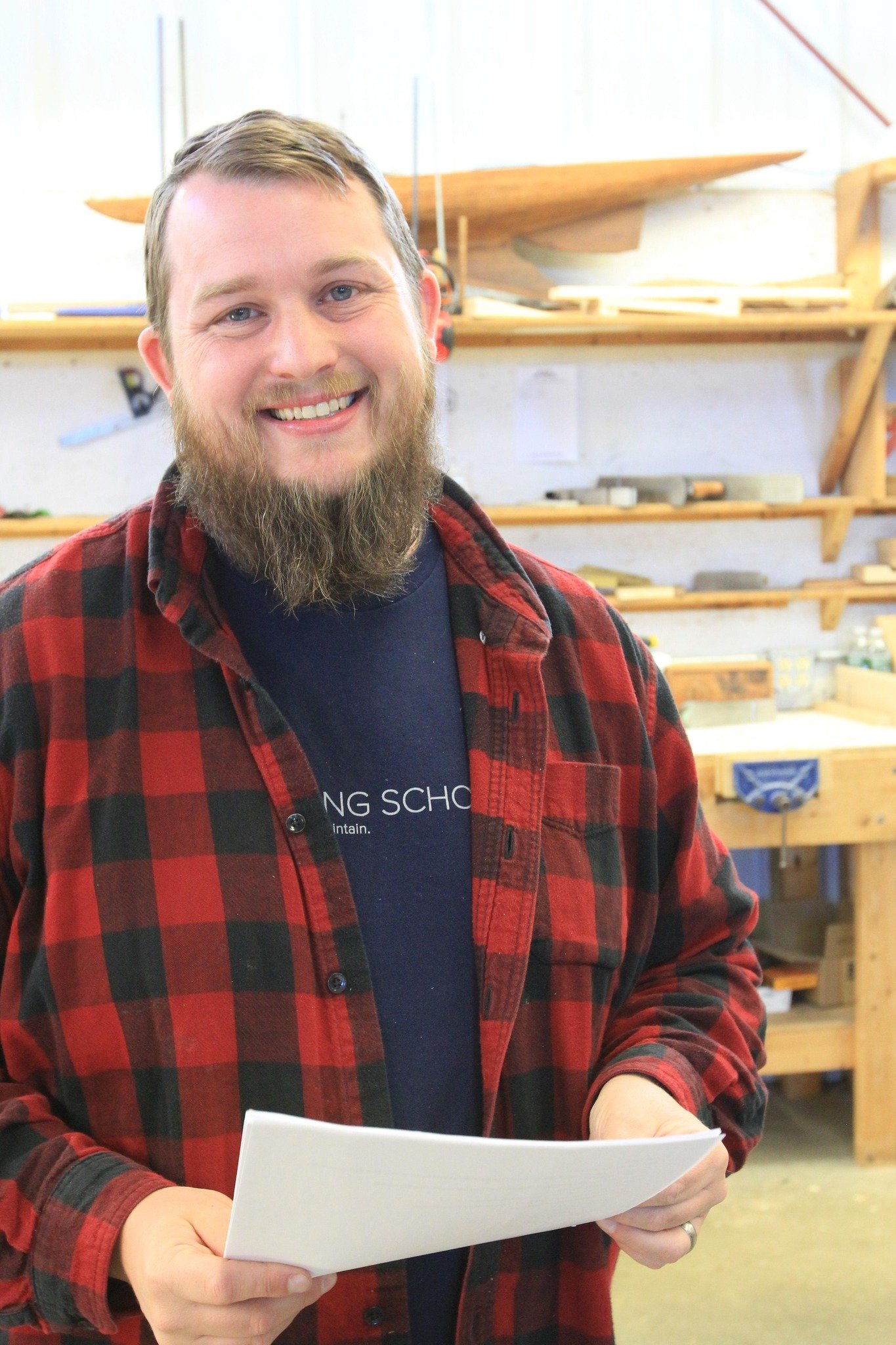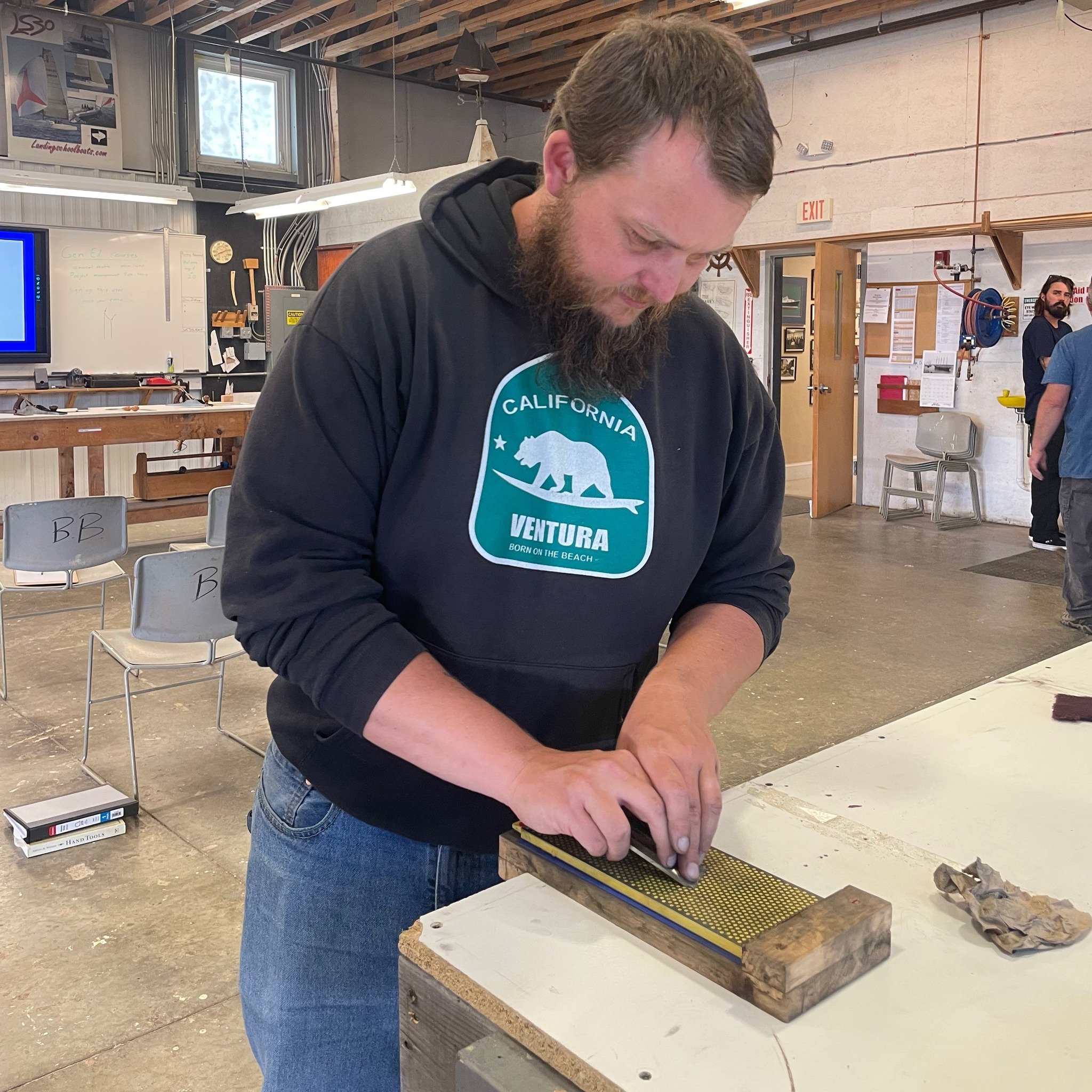Written by: Tom Laaser
Building a wooden boat is a dream for many people. It’s the type of thing when mentioned in conversation at least one person will say, “Wow, I don’t think I could ever do that.” Wooden boats are timeless. Any culture at any time near water had boats, and until recently, they were made of wood. The profession of shipwright is as storied and colorful as that of sailors. What kind of person in the 21st century would want to learn to build wooden boats? Me, for one, as well as all the other students in wooden boatbuilding programs across the country and wider world. The concept of a school for boatbuilding is a recent one, previously apprenticeship was the standard entry into the field. Like many professions, the Industrial Revolution and technological advancements have radically changed how boatbuilding works, especially where wood is concerned. The prominence of composite materials as well as the scarcity of quality wood, has made the world of wooden boats into an interesting, yet enduring, niche.
Maine is an incredible place with a rich maritime tradition that is still alive in ways that you can’t find anywhere else. The rocky coast of Maine is still dotted with boat yards, many generations old, repairing and building boats in both composites and wood. The inland forests are still full of garages packed with old patterns, jigs, and pieces of long since closed yet famous boat shops. You can’t walk five feet in any direction without seeing a boat peeking out from under a tarp or a canoe patiently waiting for its next trip.
With this rich culture still alive, Maine is home to more than one Boat building school. I was lucky enough to live close to The Landing School of Boatbuilding and Design in Arundel. It’s a unique school, born in the 70s out of a barn, expanded, yet still down to earth in a very “Maine” sort of way. Their cornerstone program is Wooden Boat Building, but they also have programs in Marine Systems, Composites, and Yacht Design. The entirety of the modern marine industry feels distilled in its walls.
Enrolling in the Wooden Boat Program was both exciting and terrifying. My woodworking experience is beginner at best, not to mention I’d decided to jump right into boatbuilding, a woodworking field that feels mysterious to even some master carpenters. Prior to the first day of class I was given a list of tools to buy. Outside of a hammer and screwdrivers, I had no idea what any of the tools were or how I’d use them. I couldn’t imagine I’d be able to build something with them. The tool list came with several books to buy as well. I flipped through them, but like the tools, most of it felt like a mystery. I hoped that once I got my hands on things then it would click.
The first day of class was a gentle introduction. Our class is only eight, with two instructors. That’s a great ratio for any class, especially for something so hands on as building a boat. We were each told to pick a bench and organize our tools. I had no idea what to do with my tools. I laid them here and there in what felt like a vague organization. Looking around it was obvious some students had been near a work bench before, with old and worn tools, some unloading three times the amount of tools as on the list. Thankfully, I was not the only one with bare essentials and no idea where to put anything.
Our class is an interesting mix. If you were wondering who studies wooden boatbuilding - Well, there’s no one answer and each answer is very unique. Our class has several veterans, one retiree who had already build a few boats and had an extensive woodworking background, a few guys wanting to change careers, and one fresh out of High School taking a gap year before college. The general level of woodworking experience was low, with a few exceptions, and many had experience being around and on ships. Some in the class expect a career in the Marine Industry after school and some are seeking something else. The task of the Landing School is a daunting one – take a group of students of wildly different skill levels and experience and give them a comprehensive education in woodworking, the process of boat building (both traditional and modern) and give them skills to succeed in the Marine Industry if they chose to or give them the tools to succeed in another endeavor.
That daunting task falls on our two instructors – both named Jake – which at first felt like it would be confusing but has turned out to make things easier. Like the students, both Jakes come from very different backgrounds and skill sets. Both are graduates of the Landing School, as are most of the staff (which should tell you something about the school in itself). Their diverse experiences complement one another and have led to some very interesting learning opportunities. Somehow, they’ve been able to take this mixed group and not only keep us on track but help us all individually with our skills.
Before we can work on the boat, we needed to lay a foundation of skills. The first week was introductions to safe shop practices. Our first hands-on task was an essential one – tool sharpening. If your tools are not sharp, there’s not much you can do. We were shown how to sharpen our planes and chisels, as well as how to disassemble them. Many of us had hand planes still in the box, covered with a thin layer of protective oil. We disassembled, cleaned, sharpened, assembled, and tested each tool. We were given a run down of the various techniques involved in using hand tools. Then we were introduced to the mill room, shown each tool from the table saw to the jointer, and took turns trying them. One amazing aspect of the Landing School is its equipment. I can imagine many carpenters drooling over the array of tools at our disposal.
Now that we had the basics we launched right into our first project – a bench dog. A bench dog is a small piece of wood with a cleat that sits on the edge of your work bench and holds your sharpening stone. Since we had just learned to sharpen our tools, it made sense to build a bench dog. Given simple plans we were set loose to build it. We build our bench dogs quickly and returned to more classroom time learning the basics of woodworking and boat building. The following weeks were a combination of lecture and hands on learning. Our second project was a tool box - beginning with one piece of lumber. The program emphasizes learning every aspect of the building process, including milling our own stock and figuring out the most economical ways to cut it up for building. Our task was to take this piece of lumber and a set of plans and figure out how to cut it all to size and size it in a way that used all of the wood. I messed up this aspect immensely and soon found one of the best parts of the program – its ok to mess up, its expected. Coming from having no woodworking experience, it always feels like carpenters get everything right the first time, and making mistakes doesn’t happen. But as we were told, “Remember: you’re in school!”
Before we knew it the first month of school was over. We’d established a foundation in hand tools and basic woodworking and we’re slowly building those as well as boat building terminology and techniques. What came next was the most challenging (in my opinion) of all boatbuilding: Lofting…


